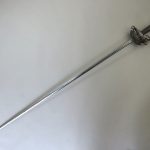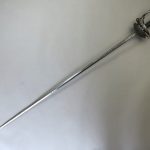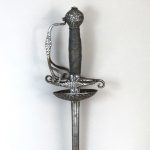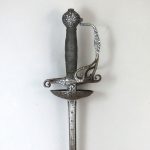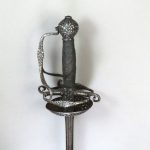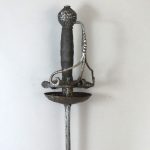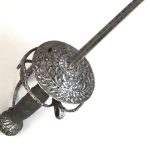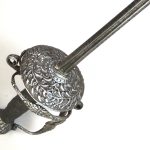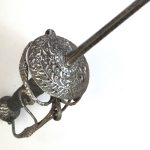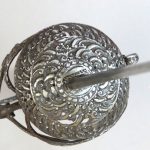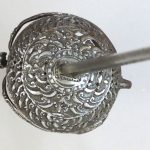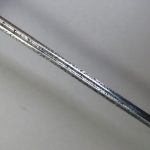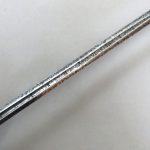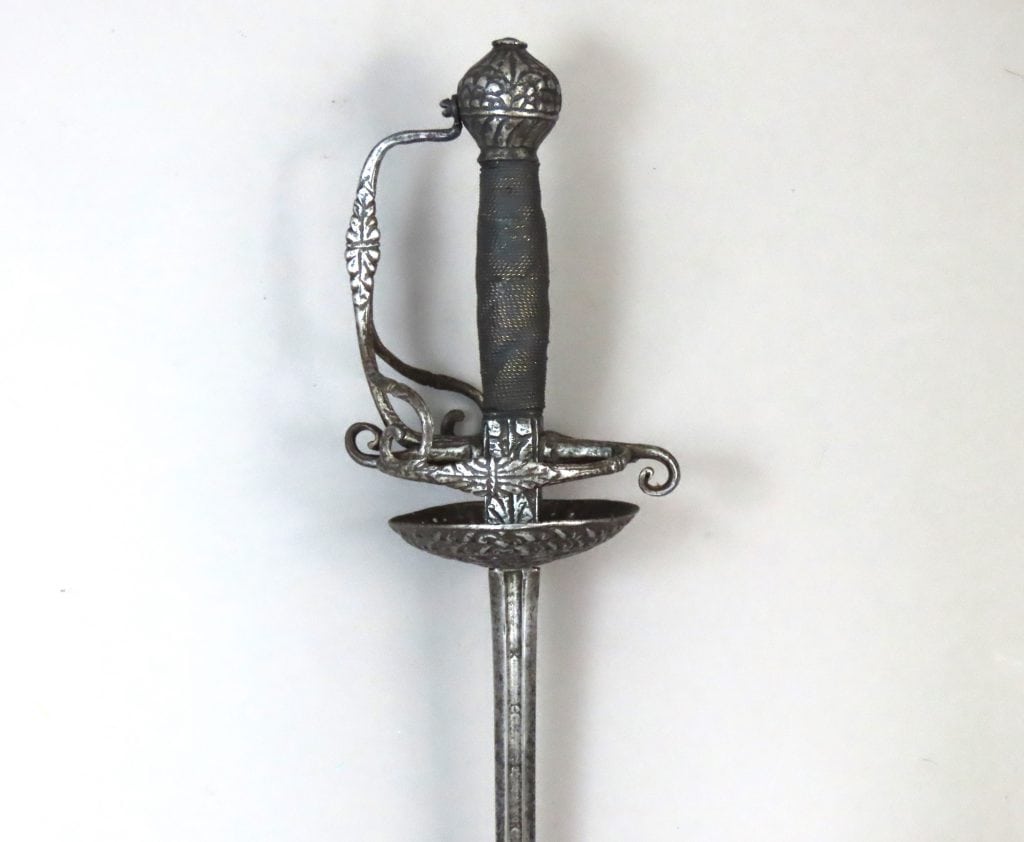
An English Dish Hilted Dueling Rapier dating to circa 1620 to 1640 mounted with a 41.5 inch Spanish Blade
To enquire about this itemplease click here
Price: £3,350
Ref: 42501805
Item Description
An English Dish Hilted Rapier dating to circa 1620 to 1640. This is a long bladed weapon made for dueling rather than for generalist or military use. The hilt is deeply chiselled with floral scrolls and panels in the English manner. The blademaker’s mark stamped into the fullers is SEBASTIAN HERNANTIS.
The prominent bowl shaped dish guard is forged in one piece from beaten iron decorated in bands formed in three concentric roundels. The rectangular section quillon block is decorated in the same manner as the dish. Front and back vertically counter curved quillons emanate from the block. The quillons are decorated with striated lines and terminate in broad flattened scrolls chiselled with leafy patterns similar to those on the dish guard.
From the front the slender knuckle bow emanates from the front quillon between and rises upwards in a “D” shape to terminate in a flattened angle which is pierced and secured to the pommel by a screw. The bow is decorated with striations similar to those on the quillons and is markedly swollen half way along. The solid globular pommel has an integral waisted neck beneath and raised button on top. It is decorated with chiselled designs in the same style as the dish guard. The grip is of baluster shaped oval cross section bound with brass twisted wire.
The stiff blade is of tapering flattened rounded diamond section. The blade is an import from Spain into England. Blademaking in England was a small industry and not well established at this time. The rapier retains an even blackened dense russet patination all over. The hilt maintains its pleasing original profile.
English rapiers of this date exhibit a common form and style, however, there are many variations under this umbrella. Many are seemingly unique like our example discussed here. For different styles of English rapiers see Stuart C Mowbray, “British Military Swords”, 2013, Andrew Mowbray Publishers, Volume One, 1600 to 1660, pages 254 to 281.
